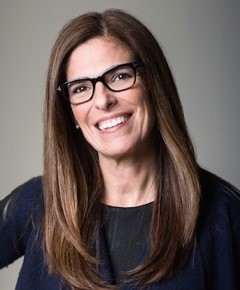By LuAnn Nigara

My friend and productivity coach, Amber De La Garza, recently gave me a book with a title that piqued my interest: “Stories That Stick: How Storytelling Can Captivate Customers, Influence Audiences, and Transform Your Business” by Kindra Hall. As a speaker and writer, I’m always looking for ways to integrate storytelling into my presentations and my books. But my father (and, truth be told, my husband) is always saying to me, “For crying out loud, LuAnn, where are you going with this?” This book looked like a perfect resource to sharpen my skills in creating the perfect edge-of-your-seat story.
The first few chapters did not disappoint. The author of a book on the power of great stories, turns out, is an excellent storyteller. So much so that before turning in that night, I bought the book on Audible so I could continue it on my bike ride in the morning. I did not want to wait until the next evening to learn what else she had to say. Kindra had me at hello.
The next day, I listened as she explained some of the reasons why storytelling is so vital for effective marketing. Great stories create an emotional connection with your audience. They create positive chemical changes in our brains. They teach potential clients about your company. Not only do great stories make your company, product or service or memorable, they actually create loyalty to your brand.
As I rode along, I thought about how much I agreed with Kindra. Three years ago, in my first book, “The Making of A Well-Designed Business: Turn Inspiration into Action,” I talked about how people buy people, not products. I explained that if you cannot make a connection with your client beyond the brand of cellular shade you sell, you cannot stand apart from another retailer selling the same product. Kindra echoed this opinion… nice.
She also got me to thinking how much I have learned about branding and storytelling from Nicole Heymer of Curio Electro. Nicole has been on my podcast three times and also wrote a chapter in my second book, “A Well-Designed Business: The Power Talk Friday Experts.” In her chapter, “Defining Your Brand,” Nicole discusses why we need to convey our brand—our story—to potential clients, then walks us through step by step on how to discover our unique brand and company story. I was happy to learn how her philosophies lined up pretty nicely with Kindra’s.
Stories and Sales
There I was, pedaling and smiling in agreement with Kindra Hall, my new best friend. And then it hit me. I haven’t just utilized storytelling in my speaking and writing. I’m always weaving stories about our company and the people who make up our company into my Window Works consultations. I’ll explain how my cousin Bill’s incessant attention to detail drives me bonkers when we are setting up any new system in our office, but how much I appreciate it when install projects go so smoothly because he leaves no detail unaccounted for. I’ll explain how funny it is that my husband walks around with scraps of notepaper to remind him to do the littlest of things, but how much I love it when one of those notes is, “Remind Lu to get her oil changed.”
Through stories like these, I have been letting our clients know we value accuracy, relationships and loyalty. They can imagine how we will be loyal to them and how we will take care of them the way we do each other. Unconsciously, on every consultation, I have been attracting and enticing people to us through the stories that make Window Works uniquely Window Works.
My 30-minute ride became a 60-minute ride. I was having a moment!
Realizing how I had used storytelling throughout my selling career, I had an even bigger epiphany. I never consciously thought about storytelling as a critical skill for success in one-on-one sales.
Head smack!
I have studied sales since I was 10 years old. I’ve learned about mirroring, the soft close, how to create scarcity and so much more. I know now that you must call out your story in places like the About You page of your website and your newsletter. It never occurred to me how my intrinsic desire to tell stories helped me achieve personal excellence in sales.
Creating Stories That Attract and Sell
Now, at Window Works, we talk with our sales team and brainstorm stories that convey our values and mission to our clients. We help each other identify the little details that make us Window Works.
How do you create stories that attract and sell? I definitely urge you to read Nicole’s chapter in my book, and to read Kindra’s book too. These ladies will give you all the whys, the hows, the tactics and strategies you need to craft your message into engaging stories. In the meantime, here are some prompts to get you started.
- Think about your message. Determine what each story will convey to your potential clients. Reliability? Integrity? Timely delivery? Start with the message you want to convey and then find which of your own real-life stories expresses this ideal.
- Make sure your stories are relatable. The story must be believable and emotional. A good story makes you feel like you are in it with the storyteller. You are drawn in by the characters, dilemma, conflict and reward.
- Create curiosity. Why should your potential client care about your story? Will they realize a benefit or avoid a problem? Will they have more status? Tap into what is in it for them.
Here are some of the stories we use. Maybe one or two will get you thinking about your own stories.
- We tell stories about why we have named Kim our fabric and wallpaper savant. We talk about the numerous times she has been able to locate, within minutes and with the simplest of descriptions, the exact pattern and style a client wants from within our nearly 2,000 books. Through these stories, potential clients feel that Kim is the designer to create exactly the look they want.
- We tell stories about how Carlos always flashes a funny sideways smile, complete with an eye roll, anytime he learns someone else will use his truck for the day. Then we add in all the colorful details about how meticulous and conscientious he is about his tools and his Window Works truck. Through these stories, potential clients can immediately visualize Carlos being just as particular in their home and taking care of their belongings with the same level of care and attention.
- We talk about the time I stood mouth open at the door of a new client who turned out not to be new at all. Twenty-five years ago, I had decorated the nursery of this now grown-up, married woman. As surprising as this was for me that first time, now we are so grateful because it has happened many times since with other clients and their grown children. And we always add to the story how we’ve even worked with multiple generations that include a mother, daughter and granddaughter. Through these stories, potential clients learn that we value building relationships. They learn that hundreds of our current clients continue to both return to us and refer us over and over for decades.
The result of all of these stories is that clients learn about us in a meaningful way. They learn about so much more than the products and services we offer. They learn how we do business and about our core values and ideals. Let your potential clients know who you are so they have a real reason to choose you over someone else.
One caution: As “storytelling” is the current buzzword in marketing, I implore you to resist thinking of it as something for big brands only. This is for you. Schedule some time to write the story of you. Write genuine tales that attract your ideal clients to you, stories that create clients for a lifetime. Then share them and grow your business.
LuAnn Nigara is an award-winning window treatment specialist and co-owner of Window Works in Livingston, NJ. Her highly successful podcast “A Well-Designed Business” debuted in February 2016. She has since recorded more than 400 episodes.






